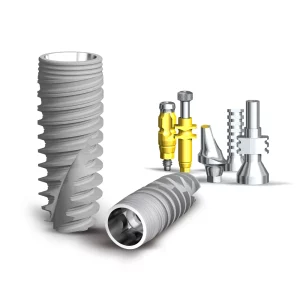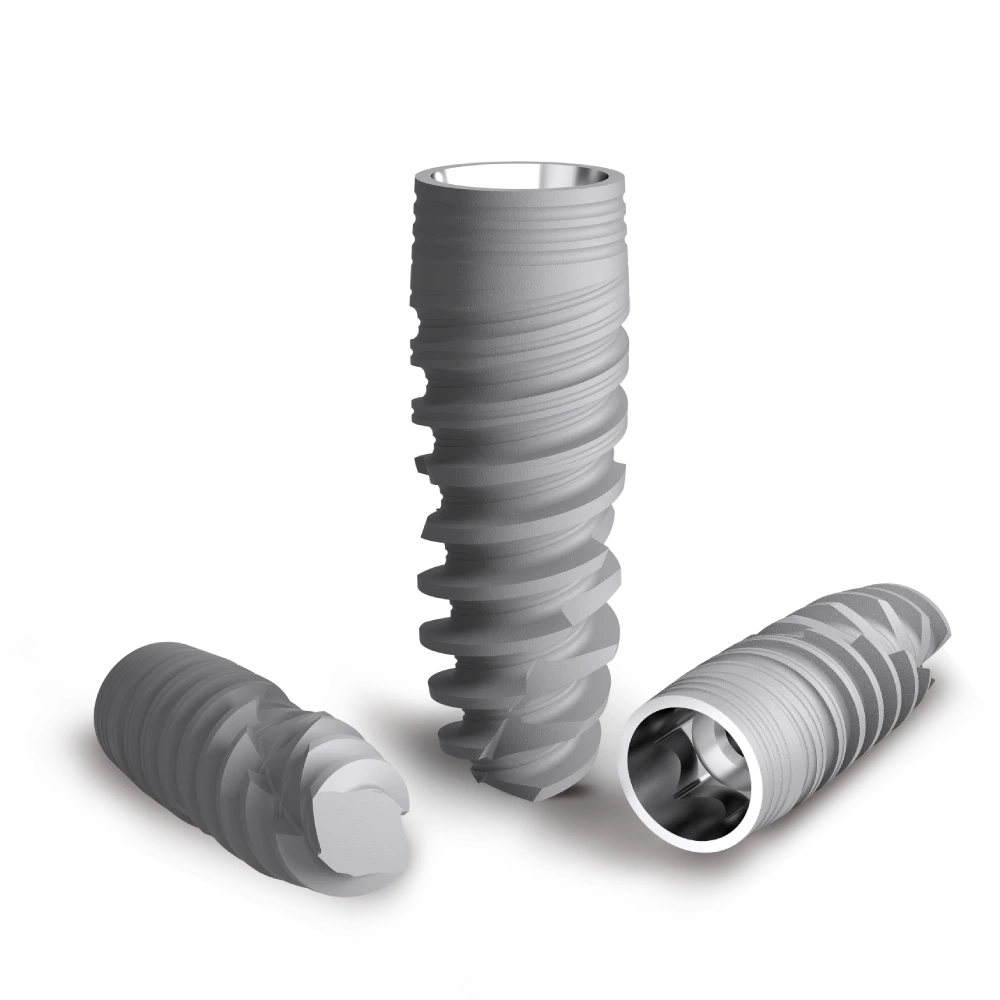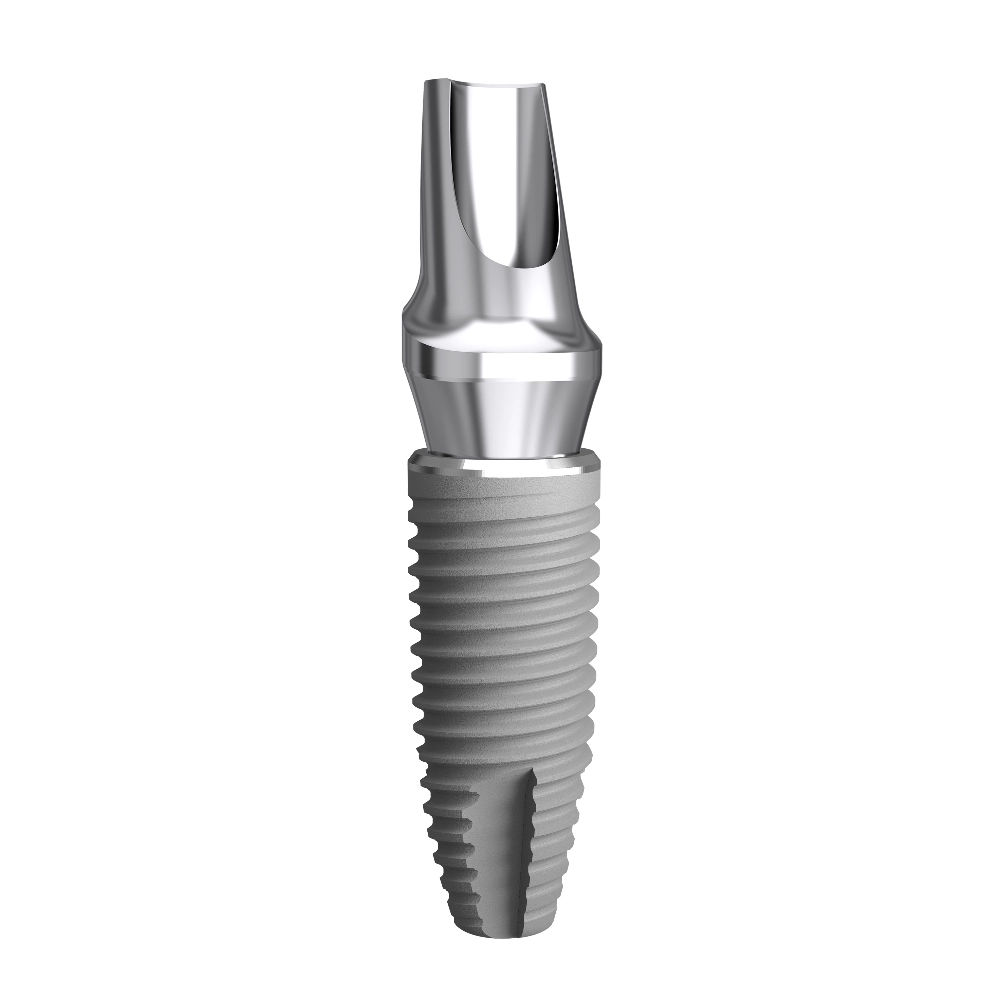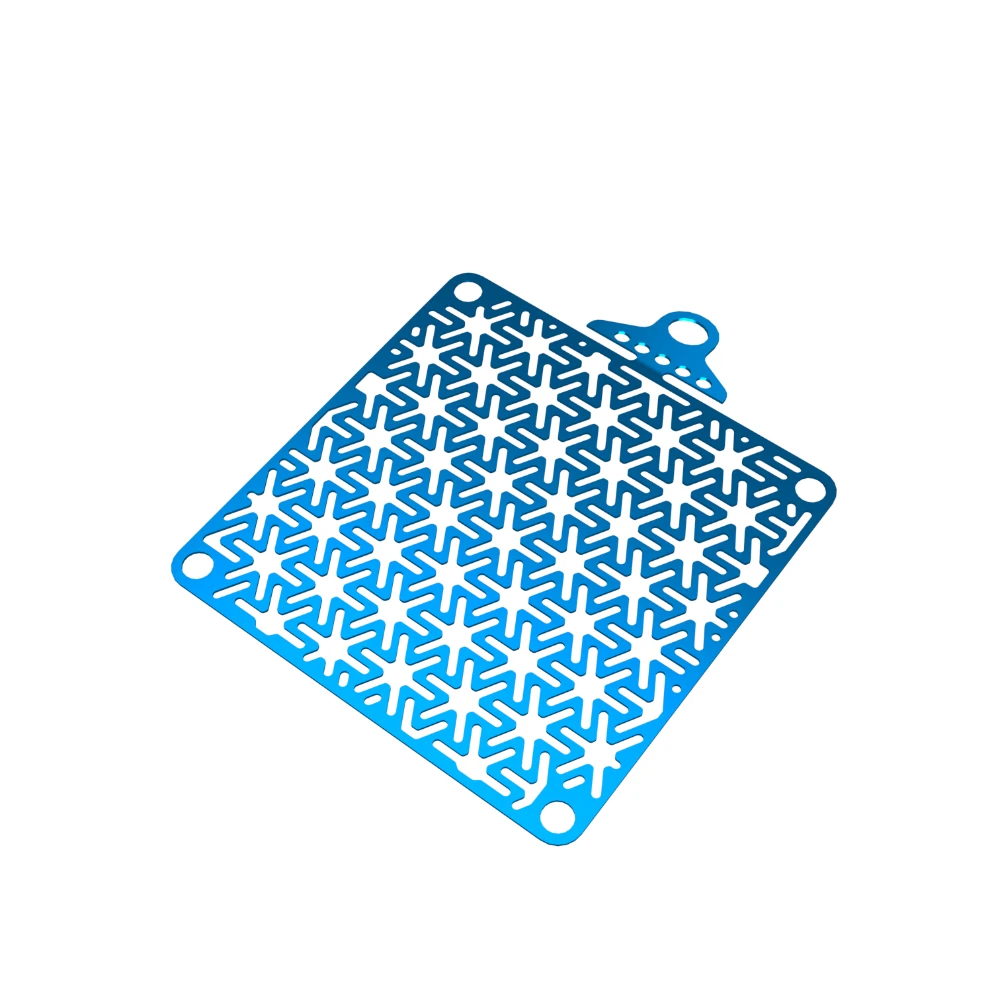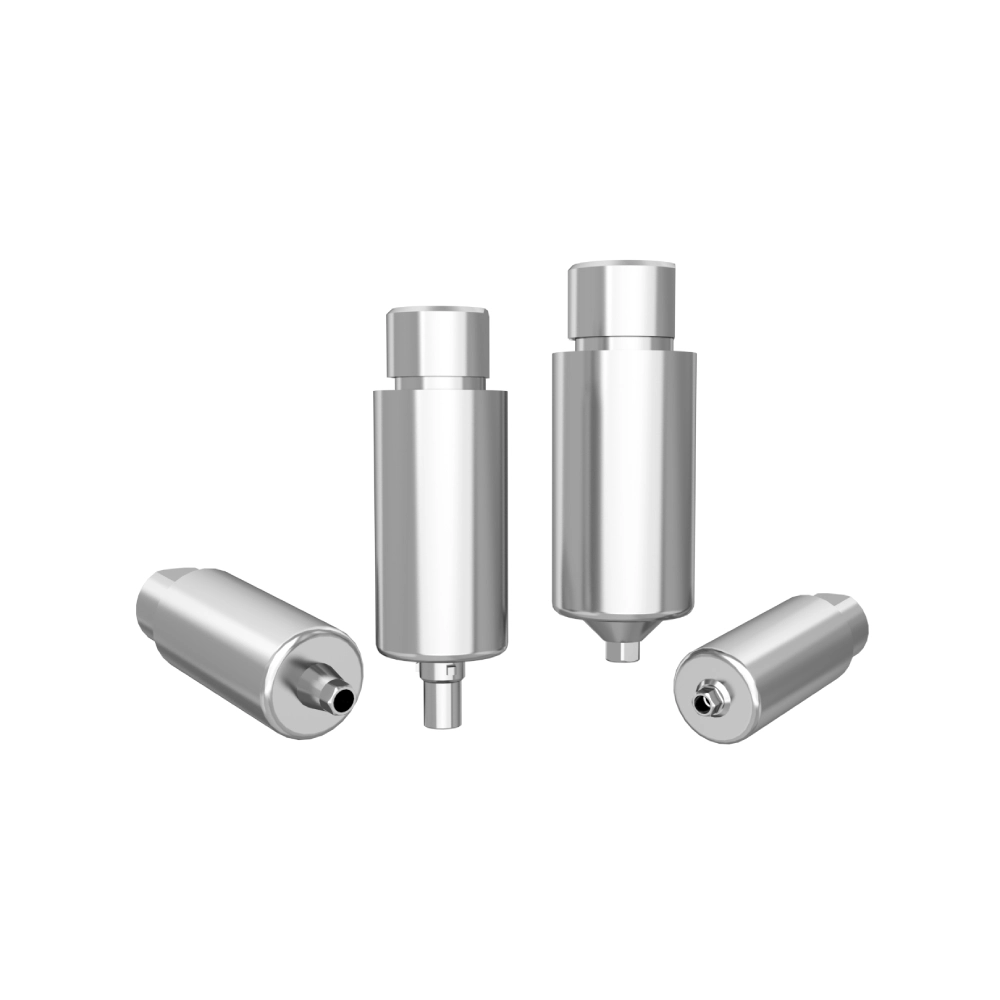Geleide botregeneratie (GBR) is een belangrijke techniek in de moderne tandheelkunde, met name in de tandheelkundige implantologie en parodontale behandeling. Het is een chirurgische procedure die is ontworpen om verloren of defect botweefsel te regenereren door de groei van nieuw bot te bevorderen in gebieden met botverlies. Dit proces zorgt voor een succesvolle plaatsing van tandheelkundige implantaten of het herstel van de botstructuur ter ondersteuning van tanden die zijn aangetast door parodontale aandoeningen. GBR is vooral belangrijk voor patiënten met onvoldoende dichtheid van het kaakbot om implantaten te ondersteunen, maar ook voor gevallen waarin het botvolume is afgenomen als gevolg van parodontale aandoeningen, trauma of langdurig tandverlies. In dit artikel gaan we dieper in op het concept van GBR, hoe het werkt en de voordelen bij tandheelkundige behandelingen.

Begrijpen van geleide botregeneratie (GBR)
Geleide botregeneratie (GBR) is een geavanceerde tandheelkundige techniek waarbij barrièremembranen strategisch worden gebruikt om de groei van nieuw bot in gebieden met botdefecten te sturen. Deze technologie brengt hoop voor patiënten die te maken hebben gehad met botverlies als gevolg van trauma, infectie, tandextractie of langdurige parodontale aandoeningen. Wanneer het botvolume onvoldoende is, heeft dit niet alleen invloed op de stabiliteit en het slagingspercentage van tandheelkundige implantaten, maar vormt het ook een bedreiging voor de gezondheid van de natuurlijke tanden.
Het kernprincipe van GBR ligt in het isoleren van het botdefectgebied van de omliggende weke delen, waardoor een gunstige micro-omgeving voor botregeneratie wordt gecreëerd. In deze zorgvuldig geïsoleerde ruimte kan het bot vrij groeien zonder inmenging van buitenaf, waardoor het natuurlijke groei- en genezingsvermogen tot bloei kan komen. Op deze manier zorgt GBR voor de vorming van voldoende volume en dichtheid van nieuw bot in het defecte gebied, waardoor een solide basis wordt gelegd voor de latere implantatie van tandheelkundige implantaten of de ondersteuning van natuurlijke tanden.
Hoe werkt GBR?
Geleide botregeneratie (GBR) verloopt meestal als volgt:
- Voorbereidingsfase: De tandarts zal het gebied rond het botdefect grondig reinigen met gespecialiseerde hulpmiddelen. titanium borstels om ontstoken of geïnfecteerd weefsel te verwijderen, waardoor een ideale omgeving voor botregeneratie wordt gecreëerd.
- Plaatsing van bottransplantaten: Zorgvuldig geselecteerd bottransplantaatmateriaal - mogelijk afkomstig van het lichaam van de patiënt zelf, van een donor of van synthetische oorsprong - wordt nauwkeurig geplaatst in het gebied waar botregeneratie nodig is en dient als een stevige steiger voor nieuwe botgroei. In deze stap kunnen hulpinstrumenten zoals membraanpennen, botschroeven of tentschroeven worden gebruikt om de stabiliteit en nauwkeurigheid van het bottransplantaatmateriaal te garanderen.
- Toepassing van een barrièremembraan: Er wordt voorzichtig een biocompatibel membraan over het bottransplantaatmateriaal geplaatst. Dit membraan speelt een cruciale rol in het voorkomen dat snelgroeiend zacht weefsel, zoals tandvleesweefsel, het botregeneratiegebied binnendringt en biedt een beschermde ruimte voor nieuwe botgroei.
- Genezingsproces: Het biocompatibele membraan blijft enkele maanden zitten en het natuurlijke genezingsmechanisme van het lichaam stimuleert in die tijd de vorming van nieuw bot. Zodra het bot tot de gewenste toestand is geregenereerd, wordt het membraan op natuurlijke wijze geabsorbeerd of door de arts verwijderd. Op dat moment heeft het ontbrekende gebied voldoende botvolume en -dichtheid om tandheelkundige implantaten of andere restauratieve behandelingen te ondersteunen.
Waarom is botregeneratie belangrijk?
Botregeneratie speelt een cruciale rol bij tandheelkundige behandelingen, vooral bij tandheelkundige implantaatprocedures. Voor een succesvolle implantatie moet er voldoende gezond en hoogwaardig bot zijn om een stabiele ondersteuning te bieden. De integriteit van het bot heeft een directe invloed op het succespercentage en de stabiliteit van het implantaat op de lange termijn. Zonder voldoende bot kan het implantaat niet goed vastgroeien, wat leidt tot een hoger risico op falen. Dit kan resulteren in een verminderde kauwfunctie en esthetische complicaties, zoals overmatige ruimte tussen de tanden of ineenstorting van de gezichtscontour.
Bovendien brengt het verlies van kaakbot niet alleen het succes van implantaten in gevaar, maar verandert het ook de gezichtsstructuur aanzienlijk, waardoor iemand er ouder en vermoeider uitziet. Het heeft ook invloed op de algehele mondgezondheid. Als het kaakbotvolume afneemt, wordt de stabiliteit van de tanden aangetast, waardoor de kans op losse of verloren tanden toeneemt. Dit heeft invloed op de efficiëntie van het kauwen, de duidelijkheid van de spraak en de natuurlijke zelfreinigende mechanismen van de mond.
Dit is waar geleide botregeneratie (GBR) essentieel wordt. Door de groei van bot in ontoereikende gebieden te bevorderen, helpt GBR de noodzakelijke botstructuur te herstellen, waardoor een stabiele en gezonde omgeving voor het plaatsen van implantaten ontstaat. Deze techniek vergroot niet alleen de kans op een succesvolle implantaatchirurgie, maar verbetert ook de esthetiek van het gezicht en de mondgezondheid van de patiënt, waardoor de normale kauwfunctie en algehele levenskwaliteit worden hersteld.
Soorten membranen die worden gebruikt bij geleide botregeneratie (GBR)
In de GBR-technologie (Guided Bone Regeneration) kunnen de gebruikte membraantypen grofweg worden onderverdeeld in twee hoofdtypen:
1. Absorbeerbare membranen
Kenmerken:
Deze membranen zijn gemaakt van natuurlijke materialen (zoals collageen) die op natuurlijke wijze door het lichaam kunnen worden opgenomen. Na verloop van tijd lossen ze geleidelijk op, waardoor er geen tweede operatie nodig is om ze te verwijderen.
Voordelen:
- Minder chirurgische belasting: Vermijdt de pijn en extra kosten van een tweede operatie.
- Lager infectierisico: Vermindert het risico op postoperatieve infecties.
- Verbeterde genezing: Hun hydrofiele eigenschappen, goede biocompatibiliteit en snelle weefselintegratie vergemakkelijken de verwerking en bevorderen de genezing.
Toepassingen:
Typisch geschikt voor milde tot matige botdefecten, vooral in gevallen waarbij het verminderen van de chirurgische belasting voor de patiënt prioriteit heeft.
2. Niet-absorbeerbare membranen
Kenmerken:
Deze membranen zijn meestal gemaakt van inerte materialen (zoals polytetrafluorethyleen) of metalen (zoals zuiver titanium), die een hoge duurzaamheid en stabiliteit bieden. Ze vereisen een tweede operatie voor verwijdering na volledige botregeneratie.
Voordelen:
- Stabiliteit op lange termijn: Ze bieden sterke ondersteuning voor het botdefectgebied gedurende een langere periode.
- Vergemakkelijkt uitgebreide botgroei: Geschikt voor gevallen waarbij meer botregeneratie nodig is of in complexe defectscenario's.
Toepassingen:
Vaak gebruikt voor ernstige horizontale of verticale botdefecten en situaties die langdurige stabiliteit en ondersteuning vereisen.
Voordelen van geleide botregeneratie
- Herstel van kaakbotstructuur:
GBR-technologie helpt bij het regenereren van botweefsel, waardoor verloren bot als gevolg van parodontitis, trauma of andere oorzaken weer wordt opgebouwd en de natuurlijke vorm en functie van het kaakbot worden hersteld. - Implantaten ondersteunen:
Door het botvolume te vergroten, zorgt GBR voor voldoende botkwaliteit om tandheelkundige implantaten te stabiliseren, waardoor het slagingspercentage van implantaatoperaties toeneemt en de implantaten duurzamer worden. - Preventie van verder botverlies:
Door de regeneratie en het herstel van botweefsel te bevorderen, helpt GBR toekomstige botresorptie en -verlies te voorkomen, waardoor de mondgezondheid en esthetiek behouden blijven.
Membraanspijkers en botschroeven gebruikt in GBR
In de GBR-technologie (Guided Bone Regeneration) is het gebruik van membraanspijkers en botschroeven cruciaal voor het vastzetten van het barrièremembraan en het garanderen van de stabiliteit van de botregeneratieruimte. Hieronder volgt een gedetailleerde introductie van deze componenten:
1. Membraan spijkers
Membraan spijkers worden voornamelijk gebruikt om het barrièremembraan op zijn plaats te houden en te voorkomen dat het verschuift of losraakt tijdens het genezingsproces. Ze worden meestal gemaakt van biocompatibele materialen, zoals een titaniumlegering, om ervoor te zorgen dat ze langdurig in het lichaam aanwezig zijn zonder bijwerkingen te veroorzaken. Membraantacks zijn er in verschillende ontwerpen, waaronder rechte tacks, hoektacks en extractie tacks, voor verschillende operatieplaatsen en -hoeken.
- Recht door zee:
Deze zijn geschikt voor de anterieure tandregio's en hebben een recht handvatontwerp dat eenvoudige bediening mogelijk maakt, waardoor de hechting precies op de bedoelde plaats kan worden aangebracht. - Schuine spijkers:
Deze spijkers zijn ontworpen voor posterieure tandgebieden of locaties die een grotere operationele hoek vereisen, en hebben een gebogen handvat dat een betere toegang tot de operatieplaats biedt, waardoor de spijker gemakkelijker kan worden ingebracht. - Afzuigspijkers:
Deze worden gebruikt om gemakkelijk membraanhechtingen te verwijderen wanneer het barrièremembraan moet worden verwijderd.
2. Botschroeven (inclusief tentschroeven)
Botschroeven in GBR dienen ook voor fixatie, maar worden vaker gebruikt om bottransplantaatmaterialen en de composiet van het barrièremembraan vast te zetten. Ze zijn meestal gemaakt van sterke, biocompatibele materialen zoals een titaniumlegering.
- Bone Tacks (DentalMaster):
Gangbare modellen zijn maat 13 en 15, gekenmerkt door een brede hechtkop die het barrièremembraan effectief vastzet. Het speciale ontwerp zorgt voor voorzichtig inbrengen en het verbrede lichaam helpt extra kracht te zetten en voorkomt losraken. - Tentschroeven:
Dit type botschroef wordt meestal gebruikt om een stabiele ruimte in het botdefectgebied te creëren en te behouden, waardoor de regeneratie van botweefsel wordt vergemakkelijkt.
Belang van membraanhechtingen en botschroeven in GBR
Het gebruik van membraanspijkers en botschroeven tijdens GBR-procedures kan de slagingskans van de operatie aanzienlijk verbeteren door te zorgen voor een stabiele fixatie van het barrièremembraan en het bottransplantaatmateriaal. Dit creëert een optimale omgeving voor botweefselregeneratie. Daarnaast houden de biocompatibiliteit en het ontwerp van deze fixatiehulpmiddelen rekening met het comfort van de patiënt en het postoperatieve herstel.
Overwegingen
Bij feitelijke chirurgische ingrepen moeten de selectie en het gebruik van membraanspijkers en botschroeven worden gebaseerd op de specifieke omstandigheden van de patiënt, de operatieplaats en de ervaring van de chirurg. Postoperatief moeten patiënten de aanbevelingen van de tandarts voor verzorging en follow-up opvolgen om een optimaal chirurgisch resultaat te garanderen en de mond gezond te houden.

Wie heeft geleide botregeneratie (GBR) nodig?
- Patiënten met botverlies door langdurig tandverlies of tandvleesaandoeningen
Langdurig tandverlies of ernstige tandvleesaandoeningen (zoals parodontitis) kunnen leiden tot geleidelijk botverlies in de kaak. Voordat ze tandheelkundige implantaten of andere restauratieve behandelingen ondergaan, hebben deze patiënten vaak GBR nodig om het botvolume te vergroten en voldoende steun te bieden. - Patiënten met onvoldoende botdichtheid voor het plaatsen van tandheelkundige implantaten
Onvoldoende botdichtheid vormt een belangrijke uitdaging bij tandheelkundige implantaatchirurgie. Voor dergelijke patiënten kan GBR de regeneratie van botweefsel stimuleren, de botdichtheid verhogen en een stabiele, gezonde omgeving creëren voor het plaatsen van implantaten. - Patiënten die botvergroting nodig hebben voor of tijdens chirurgie voor tandheelkundige implantaten
In sommige gevallen hebben patiënten een botvergroting nodig vóór of tijdens het plaatsen van het implantaat. GBR is een effectieve oplossing om dit probleem aan te pakken. Het helpt patiënten om het botvolume te vergroten en het slagingspercentage van de implantaatchirurgie te verbeteren.
Herstel en postoperatieve zorg
Het genezingsproces na een GBR-operatie duurt meestal enkele maanden, afhankelijk van de omvang van het botverlies, de algehele gezondheid van de patiënt en het succes van de operatie. Tijdens het herstel moeten patiënten deze aanbevelingen opvolgen om een goede genezing te garanderen en het risico op infectie te verminderen:
- Mondhygiëne onderhouden: Patiënten moeten regelmatig poetsen, flossen en mondwater gebruiken om het operatiegebied schoon te houden.
- Vermijd irritatie: Tijdens de genezingsperiode moeten patiënten het kauwen met de tanden in de buurt van het operatiegebied vermijden om schade aan het nieuw gevormde botweefsel te voorkomen.
- Volg medische instructies: Patiënten moeten de instructies van hun arts over het innemen van antibiotica, pijnstillers en andere noodzakelijke medicijnen strikt opvolgen en de geplande vervolgafspraken bijwonen.
- Let op je voeding: Tijdens het herstel moeten patiënten kiezen voor zacht of vloeibaar voedsel en hard of irriterend voedsel vermijden dat de operatieplaats negatief zou kunnen beïnvloeden.
Regelmatige tandheelkundige controles zijn essentieel om de voortgang van de botregeneratie te controleren en het plaatsen van implantaten voor te bereiden. Met röntgenfoto's of CT-scans kunnen artsen de effectiviteit van de botregeneratie evalueren en het behandelplan zo nodig aanpassen.
Conclusie
Geleide botregeneratie (GBR) is een cruciale chirurgische procedure in de moderne tandheelkunde en speelt een onvervangbare rol bij tandheelkundige implantaten en parodontale behandelingen. Door vakkundig gebruik te maken van bottransplantaatmaterialen en barrièremembranen kunnen tandartsen het natuurlijke genezings- en regeneratieproces van het bot stimuleren en bevorderen, waardoor patiënten een waardevolle kans krijgen om hun mondgezondheid te herstellen en de levensduur van tandheelkundige restauraties te verlengen.
De GBR-technologie helpt patiënten niet alleen bij de wederopbouw van bot dat verloren is gegaan door parodontale aandoeningen, trauma of andere oorzaken, maar zorgt ook voor succes bij tandheelkundige implantaatoperaties. Door het gecombineerde gebruik van geavanceerde membraan- en bottransplantaatmaterialen vergemakkelijkt GBR de regeneratie van sterk, gezond bot, waarmee een solide basis wordt gelegd voor een duurzame en functionele glimlach.
Als u tandheelkundige implantaten overweegt en u zich zorgen maakt over botverlies, is het daarom de moeite waard om uw tandarts te raadplegen om te bepalen of Guided Bone Regeneration geschikt is voor u. Met GBR-technologie kunt u een stabielere ondersteuning voor implantaten krijgen, waardoor zowel de functie als de esthetiek van uw tanden worden hersteld en uw algehele mondgezondheid wordt verbeterd.


